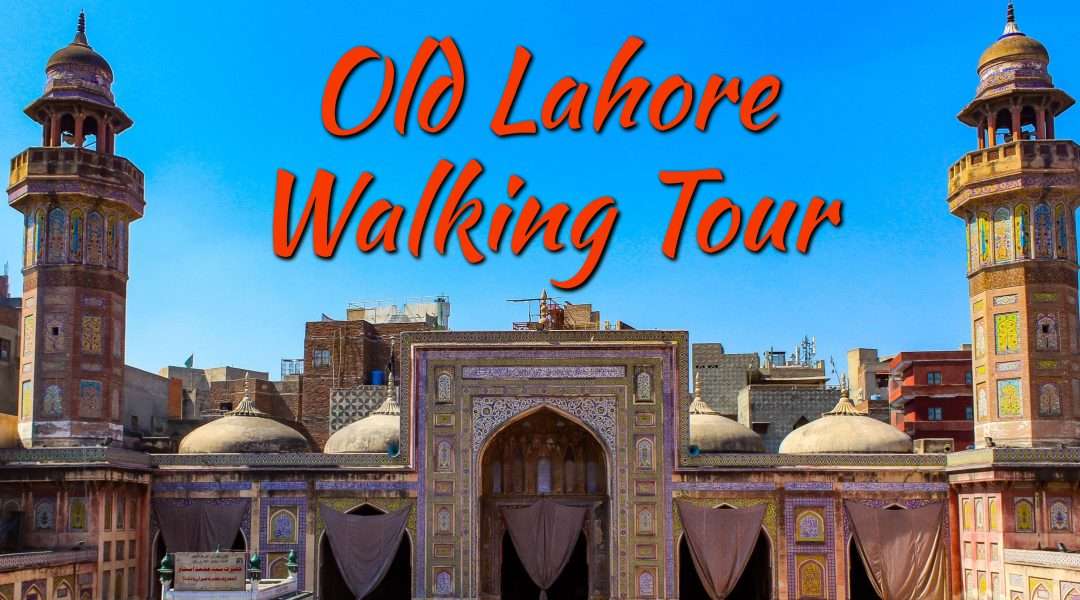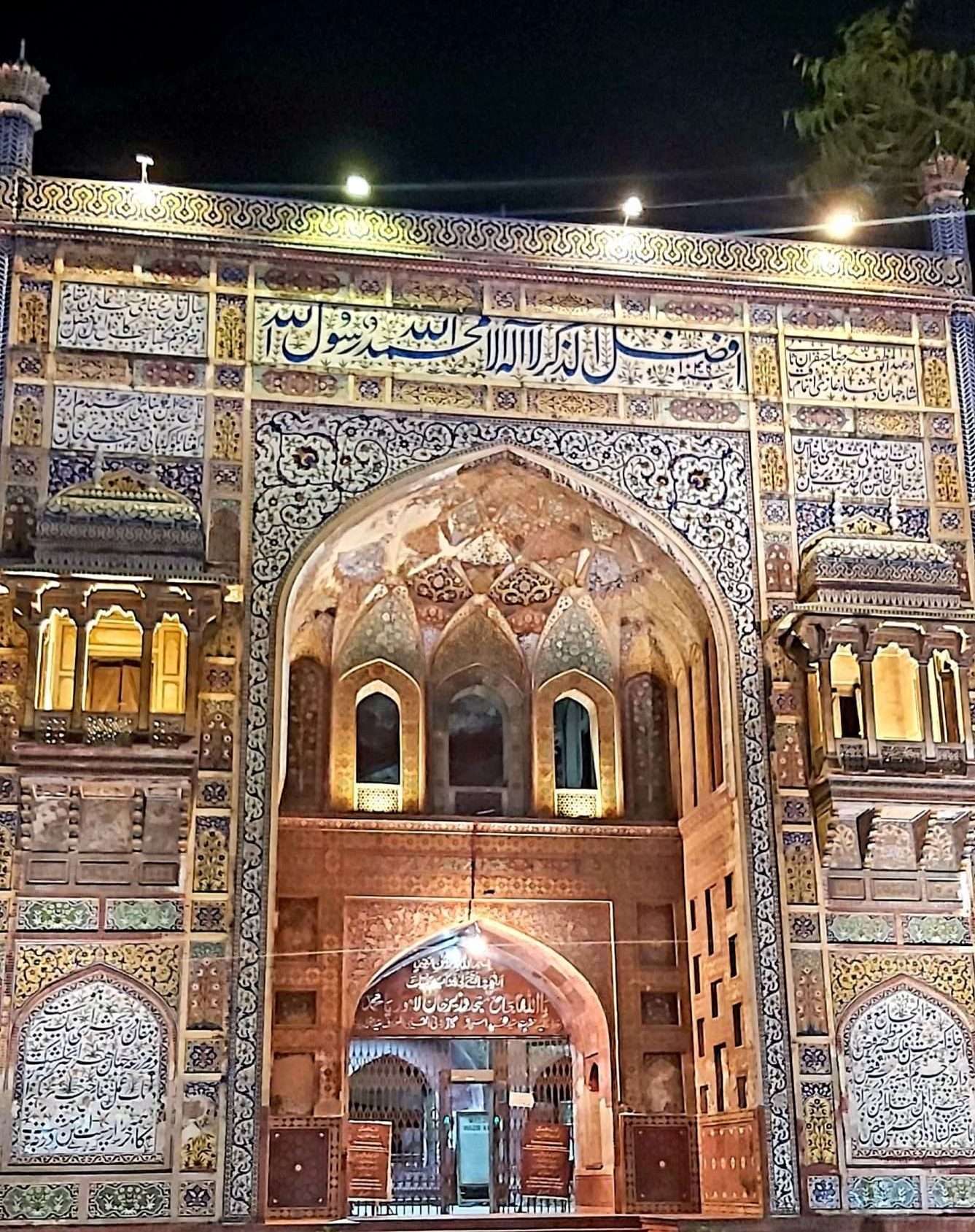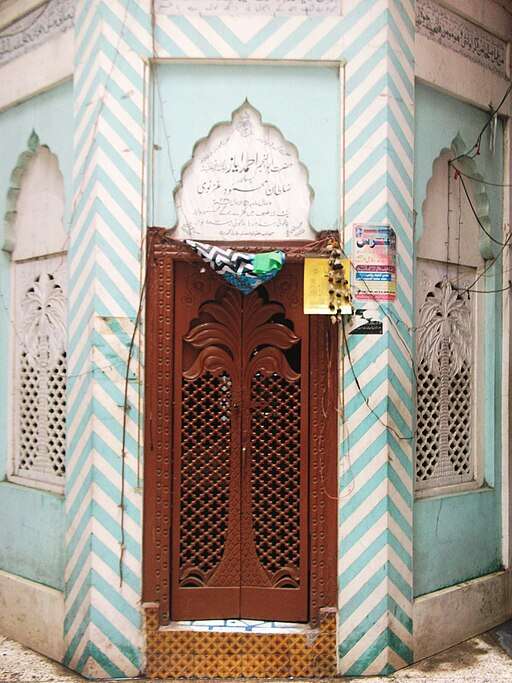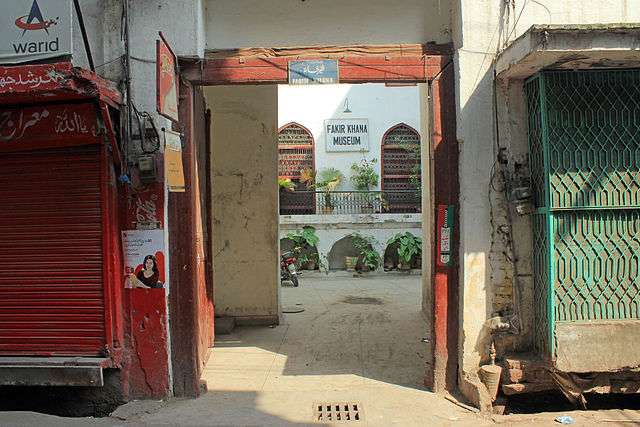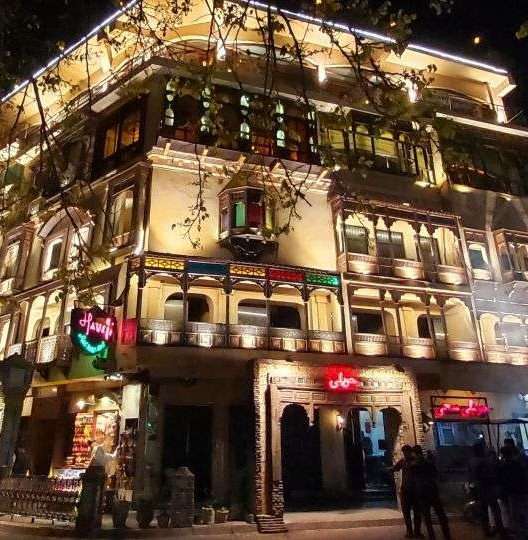
Shopping along Shahi Guzargah Lahore
Introduction to our Lahore Walking Tour
Lahore, the capital of the Punjab province in Pakistan, is known for its rich history and culture. The city has witnessed various rulers and dynasties, each leaving a mark on the incredible architecture and culture.
Walking tours are one of the best ways to explore Lahore’s history and culture and offer an opportunity to discover the city at your leisure. This walk takes in the first part of Shahi Guzargah, which is also known as the royal trail. The entire street begins at Delhi gate and ends at Lahore fortress, but we’ll be cutting out to visit Stops 5 (Rang Mahal) and Stop 6 (Fakir Khana Museum).
As you stroll between the sites outlined below, savor this exotic city’s sights, sounds, and smells. My favorites were the wedding dress shops displaying the most incredible gowns and the sweet shops with mountains of tasty treats displayed in their windows.
But don’t get too distracted. Watch out for crazy motorcycle drivers moving at speed, sometimes with the whole family on board. The narrow crowded streets seem to encourage, rather than discourage, their haste!
For this first walking tour of Lahore, we’ve purposely missed out on the famous Lahore fort, Sheesh Mahal, Shalimar Gardens, and Badshahi mosque. Instead, we recommend you do those as a separate tour. We’ve added one HERE. However, It’s easy enough to slot those sites in either before or after Stop 6 if you only have one day to try and see everything.
Now you know what to expect, let’s get started.

Delhi Gate at night
Starting Point: Delhi Gate
Delhi Gate is one of the six remaining gates of the walled city of Lahore. The gate was built during the Mughal era and served as the main entrance to the city from Delhi. The gate is a symbol of Lahore’s rich history and cultural heritage. We recommend you start your Lahore walking tour from Delhi Gate early in the morning. This will help to avoid the crowds and hot midday temps.
Alternatively, you can leave it til dusk to enjoy the hustle and bustle of the markets lining this route. Unfortunately, Fakir Khana Museum (Stop 6) closes at 5 pm. So, if you want to start later in the day, you’ll have to do that first and then circle back around. Or alternatively, visit the museum at another time.
- Opening Hours: Open 24/7
- Entry Fee: Free
Every auto Rickshaw driver in the city will know this landmark. We used the Careem app to book rides and get around town. It’s convenient, cost-effective, overcomes the language barrier, and there’s no need to haggle as the app sets the price.
Stop 2. Shahi Hammam
Shahi Hammam is a Mughal-era bathhouse located near Delhi Gate. It is a Persian-style bath that is also referred to as the “Royal Baths”. The bathhouse was built in 1635 C.E. by Ilam-ud-din Ansari (AKA Wazir Khan) during the reign of Emperor Shah Jahan. The hammam served as a public bathhouse during the Mughal era and helped to fund the nearby Wazir Khan Mosque, which Ansari also constructed. Today, it is a popular tourist attraction and a must-visit site on your Lahore walking tour.
-
- Opening Hours:
- Entry Fee: 50 PKR for locals. 500 PKR for foreigners.
Stop 3. Dina Naath Well
You’ll find Dina Naath Well on Shahi Guzargah, about 200m northeast from Shahi Hammam. The well was built during the Mughal era and served as a water source for the residents of the walled city. The structure is known for its beautiful architecture and is considered to be one of the finest examples of Mughal-era engineering.
- Opening Hours: Viewable 24/7
- Entry Fee: Free
Stop 4. Wazir Khan Mosque
Wazir Khan Mosque (Masjid Wasir Khan) is a Mughal-era mosque located adjacent to Dina Naath Well. The mosque was built by Ilam-ud-din Ansari (AKA Wazir Khan) in the mid-17th century during the reign of Emperor Shah Jahan. The mosque is famous for its intricate tile work and frescoes, including floral motifs and calligraphy, and has four imposing minarets defining the corners of the main courtyard. The mosque was originally part of a larger complex that included a row of bazaars where calligraphers and bookbinders repaired holy books and painted verses from the Quran. The original bazaar has extended to include merchants selling spices and many other items.
This gorgeous building is a must-visit site for any Lahore Old City walking tour. In fact, if you see it first during the day, make sure to get back and see it again in the evening when the main structure lights up.
-
- Opening Hours: Open from 5 am to 8 pm
- Entry Fee: Free.
Stop 5. Sunehri Masjid
Nawab Syed Bhikari Khan, the then deputy governor of Lahore, built Sunheri Masjid (The Golden Mosque) in 1753. The mosque is famous for its three golden domes and minarets. You’ll find it in the section of Shahi Guzargah, known as the Kashmiri Bazaar, around 400 m from Wazid Khan mosque.
Opening Hours: Open til 9 pm most nights. Closed Sundays.
Entry Fee: Free.
Stop 6. Rang Mahal Bazaar (and Christian School)
Rang Mahal (The Palace of Colors) is situated in a bustling wholesale market of the same name. You’ll find all kinds of wares in Rang Mahal Chowk (Market), but it’s especially famous for wedding clothes, shoes, and jewelry.
The beautiful Rang Mahal Christian High School is located among the bazaar’s sights, sounds, smells, and tastes. This gorgeous building was originally the home of Nawab Saadullah Khant and was once considered the finest Haveli in Lahore. In December 1849, the British took over the building and gave it to American Presbyterian missionaries. Here they set up the very first English-medium school in Lahore.
In this area, you can find the tomb of Malik Ayaz, an early 11th-century governor of Lahore during the Ghazni rule. Ayaz was one of the main figures in the development of Lahore into a notable city.
-
- Opening Hours: The bazaar is open most days and evenings. Food stalls stay open until late.
- Entry Fee: Free to wander about the market and view the outside of the school and tomb.
Stop 6. Fakir Khana Museum
Fakir Khana Museum is a private museum located near Rang Mahal. The museum houses a collection of over 20 000 artifacts and objects related to the history and culture of Lahore. The museum is a must-visit site during the walking tour as it provides an insight into Lahore’s rich history and cultural heritage.
-
- Opening Hours: Open from 10 am to 5 pm
- Entry Fee: Free, but donations are welcome.
Stop 7. Food Street
Food Street is a popular food destination located north of the Fakir Khana Museum and right next to Badshahi Mosque. The street is lined with beautiful Havelis, which have been converted into some of Lahore’s best restaurants. The whole area is known for its delicious food and vibrant atmosphere. We visited Cooco’s Den, which is more than 400 years old, and Haveli while there. Both had excellent food, service, and amazing views of Badshahi Mosque. But there are plenty of others to choose from if you prefer.
It’s a must-visit site to finish your Lahore walking tour and experience the local cuisine and culture.
Opening Hours: Some restaurants open early for breakfast and don’t close until after midnight.
Entry Fee: Nothing to enter. 25 USD in the most expensive restaurants will get you a pretty good meal for two!
Recommended Route for the walking tour of Lahore
The recommended route for the walking tour is Delhi Gate – Shahi Hammam – Dina Naath Well – Wazir Khan Mosque – Sunjeri Mosque – Rang Mahal – Fakir Khana Museum – Food Street. The estimated time to complete the tour is around 4-5 hours, more if you really do the Museum justice.
Make sure you wear comfortable shoes and carry a water bottle. There’s no need to rush, and there are plenty of places to stop, refresh, and rest along the way. Check out the map below and zoom in for details.
Conclusion
The walking tour of Lahore’s popular sites outlined above provides an opportunity to discover the city’s rich history and cultural heritage. The tour covers some of the city’s most iconic sites, including Delhi Gate, Wazir Khan Mosque, and Rang Mahal, offering a unique city perspective. We think it’s a must-do activity for anyone visiting Lahore. What about you?
You can find this article and a few more that will help you explore Lahore on GPSMyCity.
If you prefer not to do a walking tour of Lahore independently, Viator has a selection of guided walking tours. You can check them out below.
You can find other helpful resources to make your visit to Lahore a success over on THIS PAGE.
And if you have questions about safety in Lahore, the best place to stay, and if it’s worth visiting, then head over to THIS POST.

